- Narragansett Beer Guide: Everything to Know About This Historic Brewery - November 9, 2022
- 6 Best Breweries in Duluth MN: Can’t Miss Spots - November 9, 2022
- Best Breweries in Chicago: Where to Drink in the Windy City - October 28, 2022
Did you know in 2020 alone, Americans consumed 26 gallons of beer? That’s a lot! So it’s no surprise that we love our beer. Beer is a popular alcoholic beverage, served all over the world. Because of this, there are many types of beer out there.
When walking into a tasting room or tap house, you’ll see and hear all of these crazy names. You may be thinking: what is the difference between a stout and porter? What does IPA stand for? What are these crazy names like hefeweizen? What are hops?
It can be difficult to know the difference between all of these different beer types and varieties and what makes them unique. Don’t worry, we got you covered.
Lager
The lager is by far the most popular style of beer in the world. From Budweiser to Yuengling, some of the beers you likely drink are lagers. However, microbreweries make their own lagers (and arguably better ones) to compete with these beer monoliths.
While lagers are popular in the US, this style of beer exists all over the world. Let’s look at a few lagers — and you’ll likely recognize some of them.

Pilsner
Most of the lagers are drink are actually pilsners. This style of beer, in short, took over the world. Why are they so popular? Pilsners are very smooth lagers, though they do have a bit of hoppiness to them.
The pilsner dates back to the 19th century and gets its name from the town it originated in — Pilsen, Bohemia (which is the modern-day Czech Republic).
Helles
Helles is a German-style lager that translates to “pale in color.” That’s because the beers are often pale in color, though it doesn’t compromise in flavor. While Helles beers are crisp, they have a strong maltiness to them.
Märzen
Märzen or Märzenbier (translates to “March beer”) is another popular German lager. It has a medium to full-body flavor and a slight amber taste.
Märzen beers date back to 16th century Bavaria where this beer was brewed in March but no one drank the beer until the fall. Because of this, it’s best known as the Oktoberfest beer.
Why was the beer brewed so many months in advance? At the time, brewing equipment was made of wood. Because of fire hazards in the summer, the German government banned brewing beer between April and September.
But the Bavarians needed beer for Oktoberfest, right? So they brewed the beer in March and kept it in caves so it would stay cool until the festivities.
Check out how this beer compares to Warsteiner Oktoberfest Beer.
Vienna Lager
Vienna lagers originated in, well, Vienna, Austria. This style dates back to the mid-19th century when Anton Dreher combined lager yeast with lightly kilned malt.
The result is an amber-style lager. Even though Dreher and his partner, Gabriel Sedlmayr, revolutionized brewing with the creation of the Vienna lager, this beer is rarely brewed in Vienna. Rather, the Bavarian amber lager variety, the Märzen, dominated the Vienna lager.
Mexican Lager
Mexican lagers are unique because they’re brewed with maize (flaked corn) and are often flavored with lime. The world’s most famous Mexican lager is Corona, though there are many more out there.
Kölsch
Kölsch is actually a unique lager. It’s technically an ale, though it’s fermented at larger temperatures. The style of beer comes from Cologne, Germany. It’s a very crisp beer yet accentuated with hops. This doesn’t give the beer a bitter flavor; rather, it has a slightly fruity flavor.
Ales
Ale is an extremely old style of beer — its origins date back to Medieval England. Because of this, ale is a common type of beer served in England and made its way to America.
Ale is simple. It’s made by combining water and grain and fermenting it in yeast. But the classic ale has seen many makeovers.
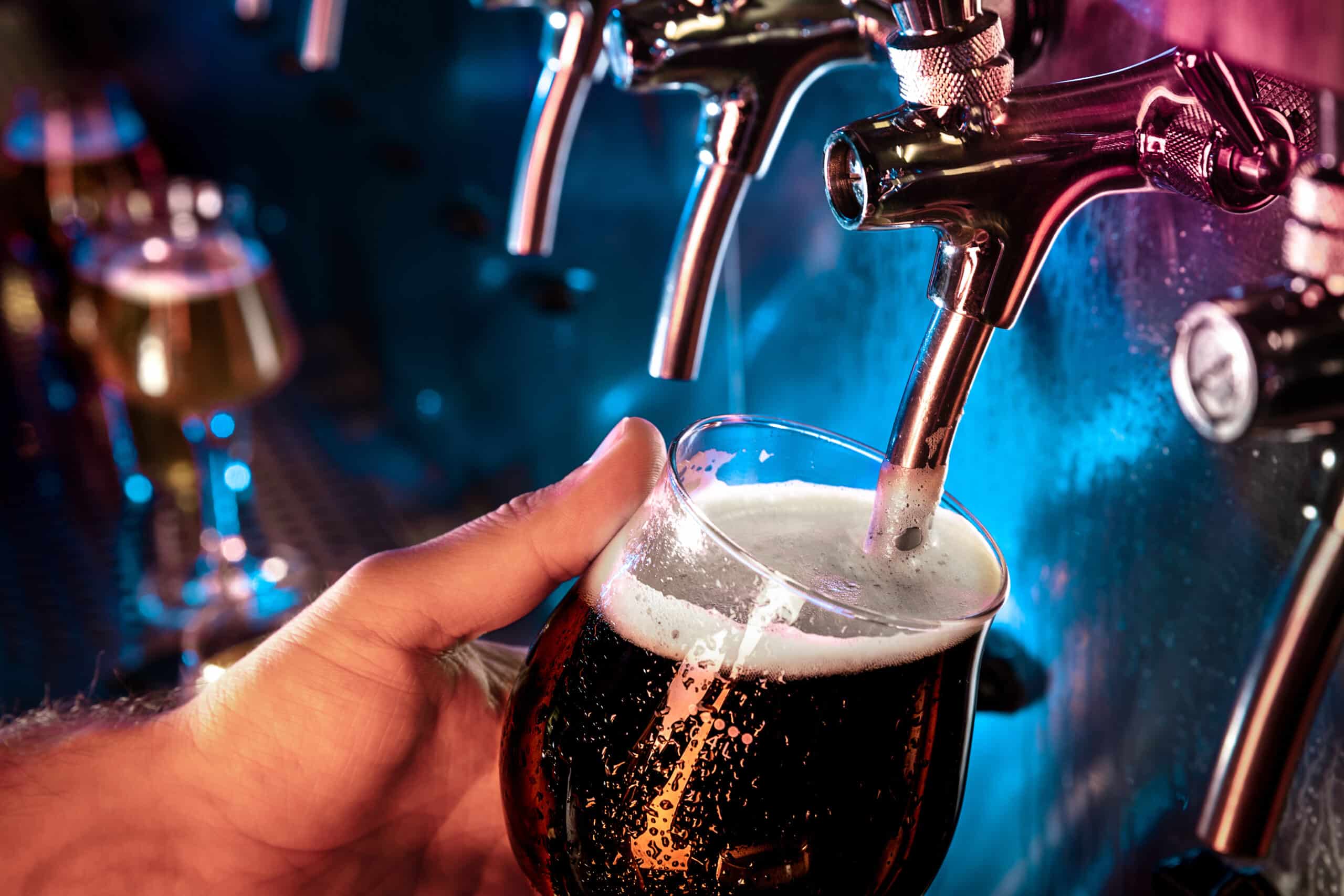
India Pale Ale (IPA)
India Pale Ale, often called IPA, is one of the most popular forms of ale. While it’s a favorite beer in America, its origins date back to Britain. British sailors would load up their beer barrels with hops when sailing to India. Hops are a plant in the same family as marijuana. The hops were used as a preservative, so their beer would last throughout the entire trip.
However, hops leave a bitter taste in their beer. This is why IPAs are famous for being bitter and malty.
As we will see with the different types of IPAs, the British use different hops than the Americans. Popular hops used in British IPAs are Admiral, Beata, Boadicea, Bramling Cross, British Kent Goldings, Challenger, Cobb’s Golding, Comet, and Endeavour, just to name a few.
IPAs have since expanded during the sailor days. There are many types of IPAs and even the hops plant has grown to accommodate the IPA popularity. Therefore, it’s best to go over the most common IPAs you’ll find at a brewery or tap house.
American IPA
Unlike British IPAs, Americans add the hops during the part of the brewing process when the beer is boiling. By doing this, the bitter flavor is more controlled while still maintaining the distinct hoppy flavor and aroma.
New England IPA
But don’t get a New England IPA mixed up with a traditional American IPA! New England IPAs add the hops during the fermentation process, a strategy known as “dry hopping.” While this also cuts down on bitterness, the beer has a juicier flavor.
In addition, they’re often brewed with wheat and oats. Many NEIPAs are made with fruit for a sweeter taste. The beers are also unfiltered, giving them the nickname “Hazy IPAs.” The hazy means the beer is more flavorful and fragrant.

Double (Imperial) IPA
Double IPAs (also called Imperial IPAs) are stronger in alcohol content and have a more aggressive flavor. This style of beer is completely hop-centric; however, they also use more malt in the brewing process. The malt adds to the ABV.
Session IPA
Contrary to double IPAs, Session IPAs have less alcohol. They usually have below 5% ABV but are smoother than a traditional IPA.
Fresh-Hopped
Also called wet-hopped beers, fresh-hopped IPAs are exactly what they sound like. The hops are brewed right when they’re picked off the vine. To qualify as a fresh-hopped IPA, the hops have to be brewed in less than 24 hours after they’ve been picked.
Hop harvesting season occurs once a year, usually in late August and September. This is the only time you can get a fresh-hopped beer. The closer to the brew date, the better the beer.
Why drink a fresh-hopped beer? The taste is not only fresher but the hop flavor is more brilliant overall.
Single-Hopped
There are many types of hops and IPAs are usually brewed with a combination of hops.
However, single-hopped beers are brewed with, you guessed it, just one style of hops. That one style of hops will likely be used during all of the hopping process, such as during the boil and finish (or dry hopping if the hops are added during the fermentation process).
Pale Ale
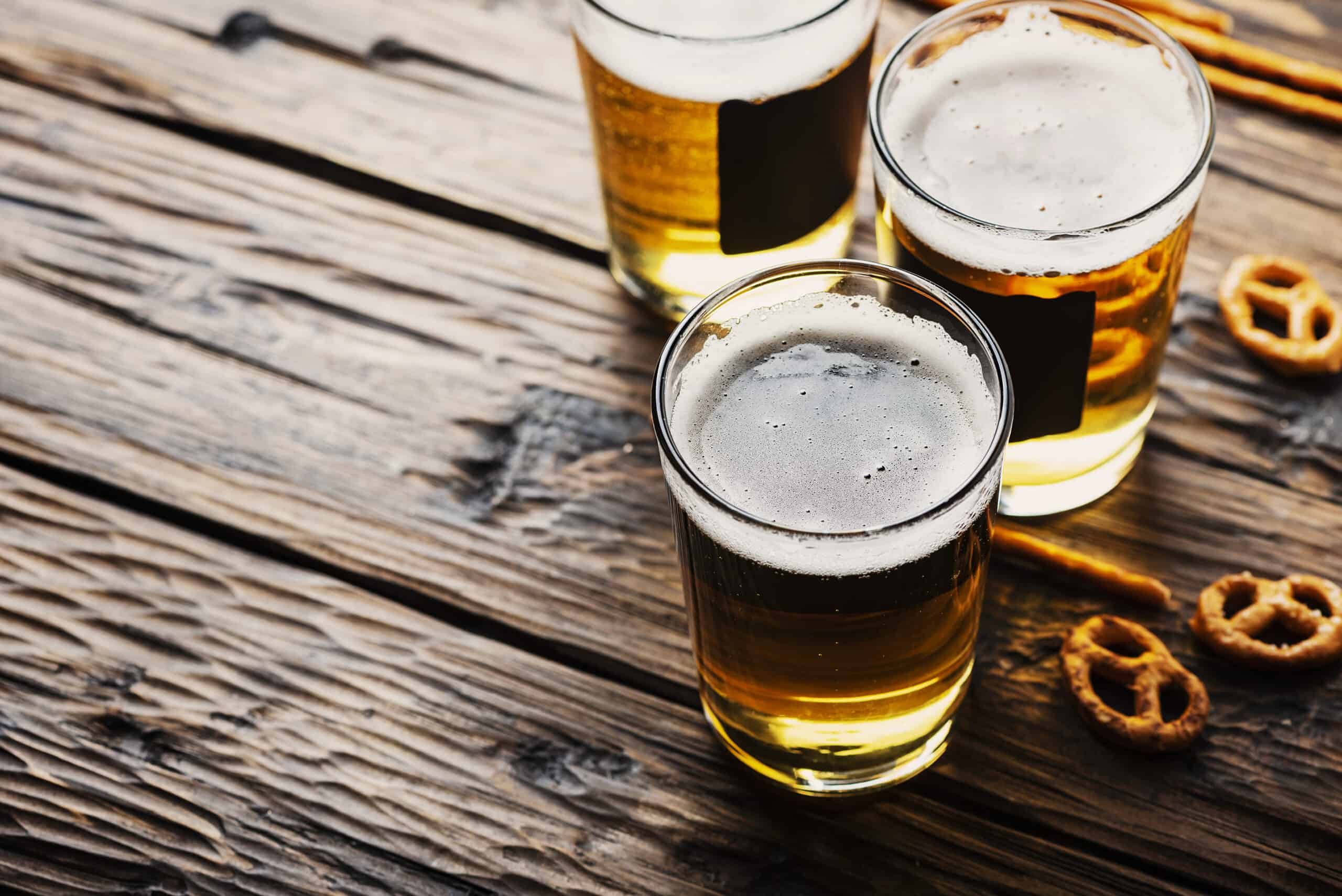
What’s the difference between an India pale ale and just a, well, normal pale ale? Pale ales have fewer hops than IPAs and usually have lower alcohol content. This makes them more balanced and slightly on the maltier side.
Blonde
Don’t confuse blonde ales with pale ales or even IPAs. While they’re all similar in color, blonde ales aren’t as hoppy as these other styles. That’s because they’re brewed with more malt. The malt makes this style of beer easier to drink and is perfect for those new to craft beer. Blonde ales are also often referred to as golden ales.
Stout
Stout isn’t a type of ale for beginners. This type of ale is brewed with roasted barley, which gives stouts a stronger flavor. The beer is also darker and heavier than traditional beers. Some stouts have specific flavor profiles, such as coffee and even chocolate.
Stouts are popular because of their versatility. The barley opens the doors to a variety of other flavors. For example, stouts are often aged in barrels and some are aged with bourbon.
While stouts are distinct and sweeter, many people don’t like the heaviness that comes with these beers.
But not all stouts are heavy. Take Guinness for example, the most popular stout in the world. It’s a dry Irish stout. Traditional Guinness is served as a nitro pour. The gassy pour gives the beer a smoother and almost softer taste than if you were to drink Guinness out of a bottle.
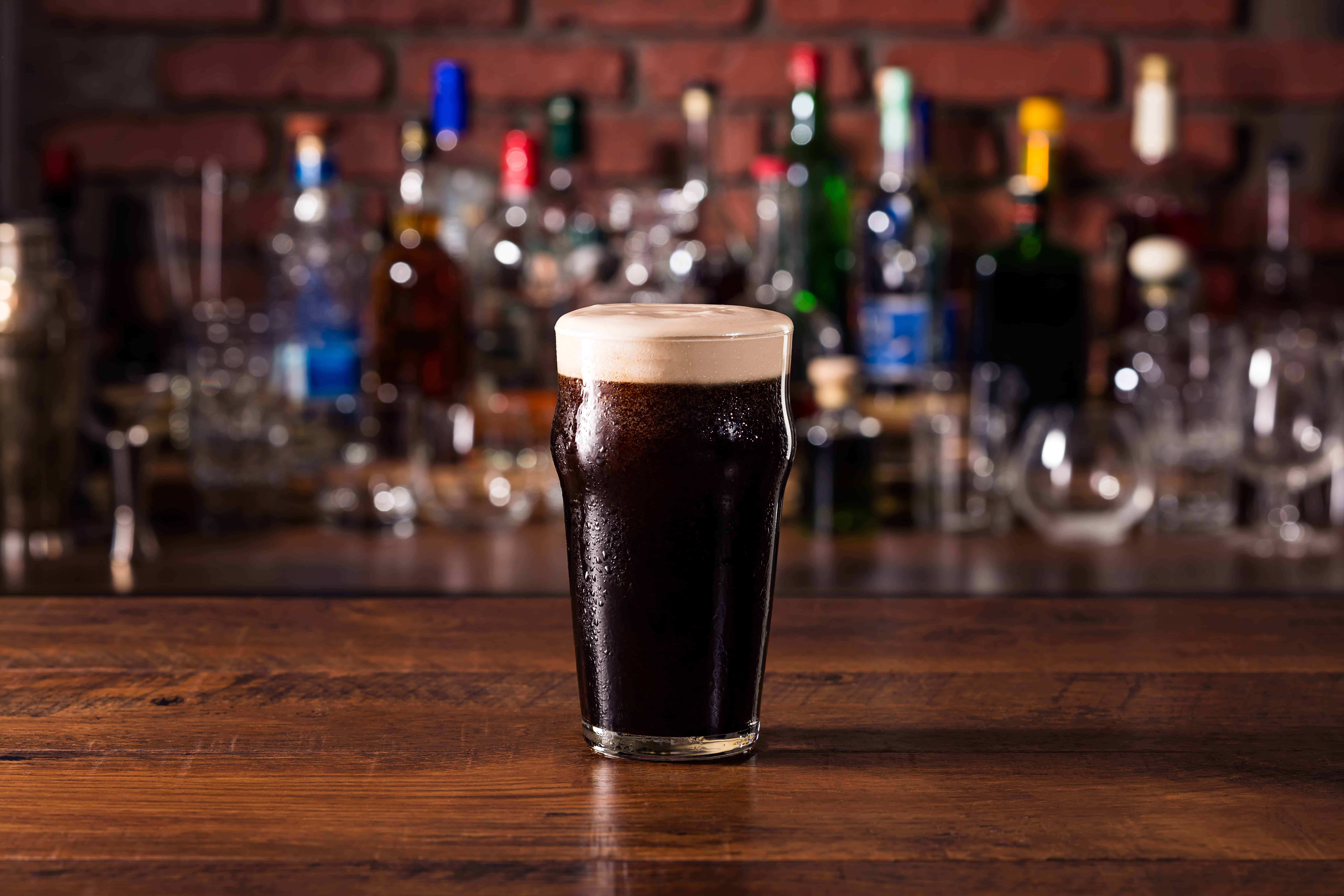
Like IPAs, stouts have become popular and there are a variety of stout types.
Milk Stout
Milk stouts are brewed with lactose, which gives them a milky consistency and sweeter flavor. But since the lactose doesn’t ferment, milk stouts are even thicker than traditional stouts. Some milk stouts are also versatile, brewed with notes of espresso, coffee, and even chocolate.
Imperial Stout
Imperial stouts are by far the strongest and boldest type of stout. Originating in the US, these beers have incredible maltiness. This makes the beer so dark, it comes out black. The maltiness also adds to the flavor and ABV content.
Many brewers also add hops to imperial stouts for a more distinct flavor. But understand the addition of hops isn’t what makes it an “imperial” stout — this is often confused because imperial IPAs have extra hops and malt.
Imperial stouts just have more malt than traditional stouts, and some brewers choose to add hops.
Pastry Stout
These stouts are exactly what they sound like — they’re brewed with flavors that make them taste like pie, cakes, and even candy.

The best example of a pastry stout is Stone Brewing’s Xocoveza. Xocoveza (pronounced choco-veza) is inspired by Mexican hot chocolate — a type of hot chocolate that’s less sweet and has a more full-bodied chocolate flavor.
While it’s technically an imperial stout, it’s brewed with chocolate, pasilla peppers, coffee, cinnamon, vanilla, and nutmeg. The pepper gives it a kick but the sweet and maltiness give it that classic full-bodied flavor.
Some pastry stouts are also brewed with fruit. For example, Avery Brewing’s Bon-Bon Cerise (which means “cherry candy” in French) is a beer barrel-aged in Kentucky Bourbon with chocolate aroma and, you guessed it, cherries. The beer is best described to taste like “chocolate-covered cherries” but the bourbon adds a whole new layer to this complex beer.
Porter
Stouts and porters are often confused with each other. And it makes sense why; like stouts, porters are dark in color and rich in flavor. They’re brewed with ale yeast, putting them in the same category as stouts.
But what’s the difference between stouts and porters? The difference lies in the way they’re brewed. Stouts have a fuller flavor because they’re brewed with unmalted roasted barley. Porters also tend to be lighter in flavor. Otherwise, these two are very similar types of ales.
Brown
Brown ales are the middle-ground between porters and stouts. They have a rich flavor, characterized by the brown malt used. This is why most brown ales have that rich brown color, though the color of brown ale also varies.
Brown ales were first brewed by the British. They started brewing beer with brown malt and started adding more notes, such as caramel. When brown ales came to the US, Americans started brewing brown ales with more hops for a lighter flavor.
Amber
Amber ales are distinct because they’re brewed with more malt compared to other ales, giving them a distinct warm red color. Many amber ales are also brewed with caramel notes, giving them a sweeter flavor.
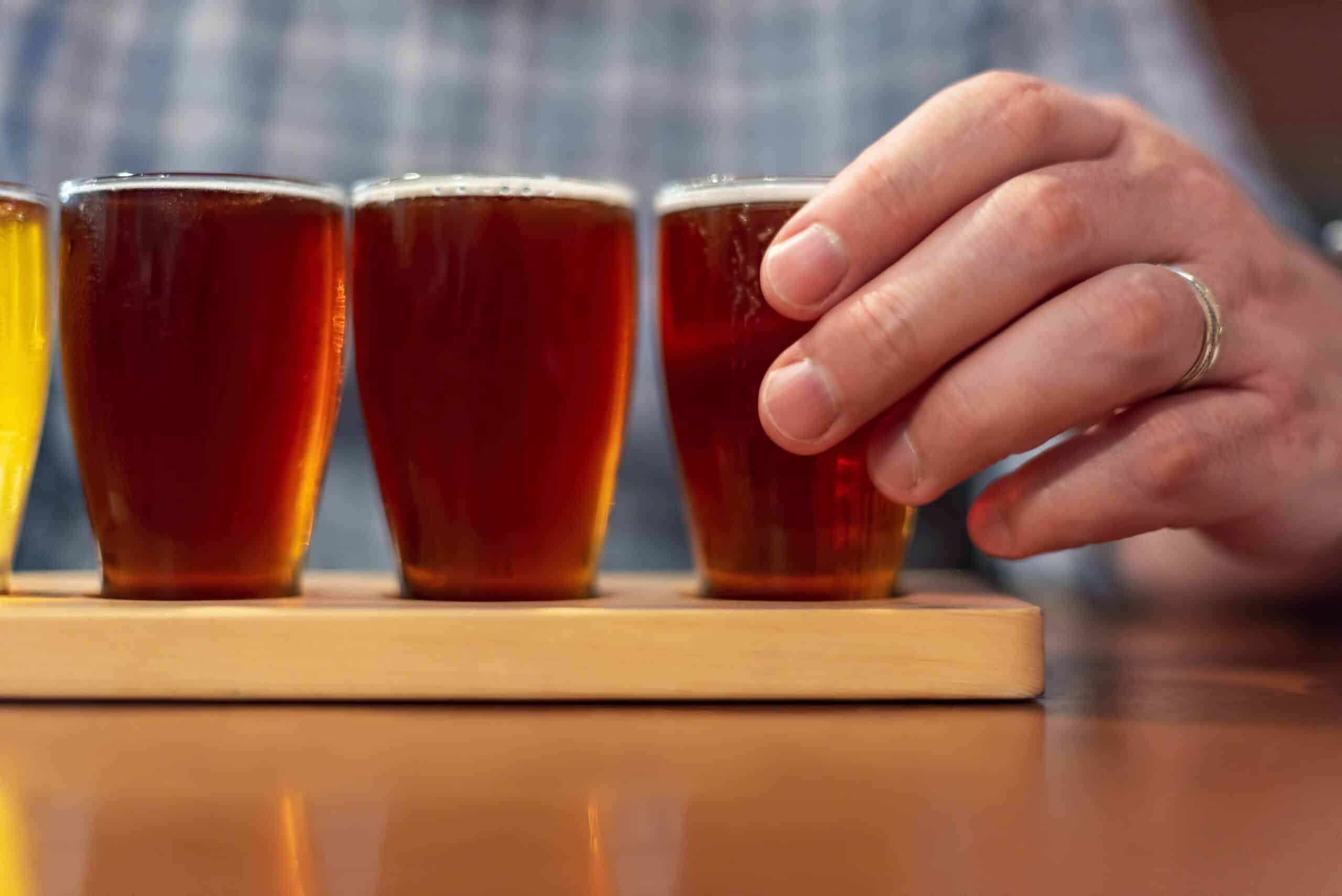
There are different types of amber ales, though American ambers are the most distinct. They’re brewed with American hops, offering more versatility. This means some amber ales taste more fruity while others have more of a pine flavor.
Wheat
As stated previously, ales are brewed with water and grain and fermented in yeast. However, wheat beers are brewed with more grain, which adds more body to traditional ales. The most popular types of wheat beers are the German and Belgian varieties, though American wheat beers are becoming more popular.
Witbier
Witbier, which literally translates from Dutch to “wheat beer,” is a style of beer commonly brewed in Belgium. They’re a refreshing type of beer, brewed with orange peels and coriander.
Even though it’s now called the Dutch name, this style was originally founded in the French-speaking part of Belgium and was called bière blanche (translates to “white beer”).
The beer dates back to the 14th century and was first brewed by monks in monasteries. The first bières blanches were made with local fermentable grains and a blend of spices and herbs known as gruit.
Check out this article where we explain the differences between Witbier and Hefeweizen.
Hefeweizen
Hefeweizen (pronounced heh-Fuh-wy-zen) is a German-style beer.
It’s brewed with more malt than traditional wheat beers, so it has a sweeter flavor. This beer is also fermented with a unique type of yeast called Weizen ale yeast, so a hefeweizen has a very characteristic taste. In fact, “hefeweizen” translates to “yeast wheat.”
Because of this, it’s the most popular type of German Weissbier (translates to “white beer”). Its origins date back to 1520 and the first hefeweizens were brewed in Bavaria, though the beer didn’t flourish until later due to purity laws.
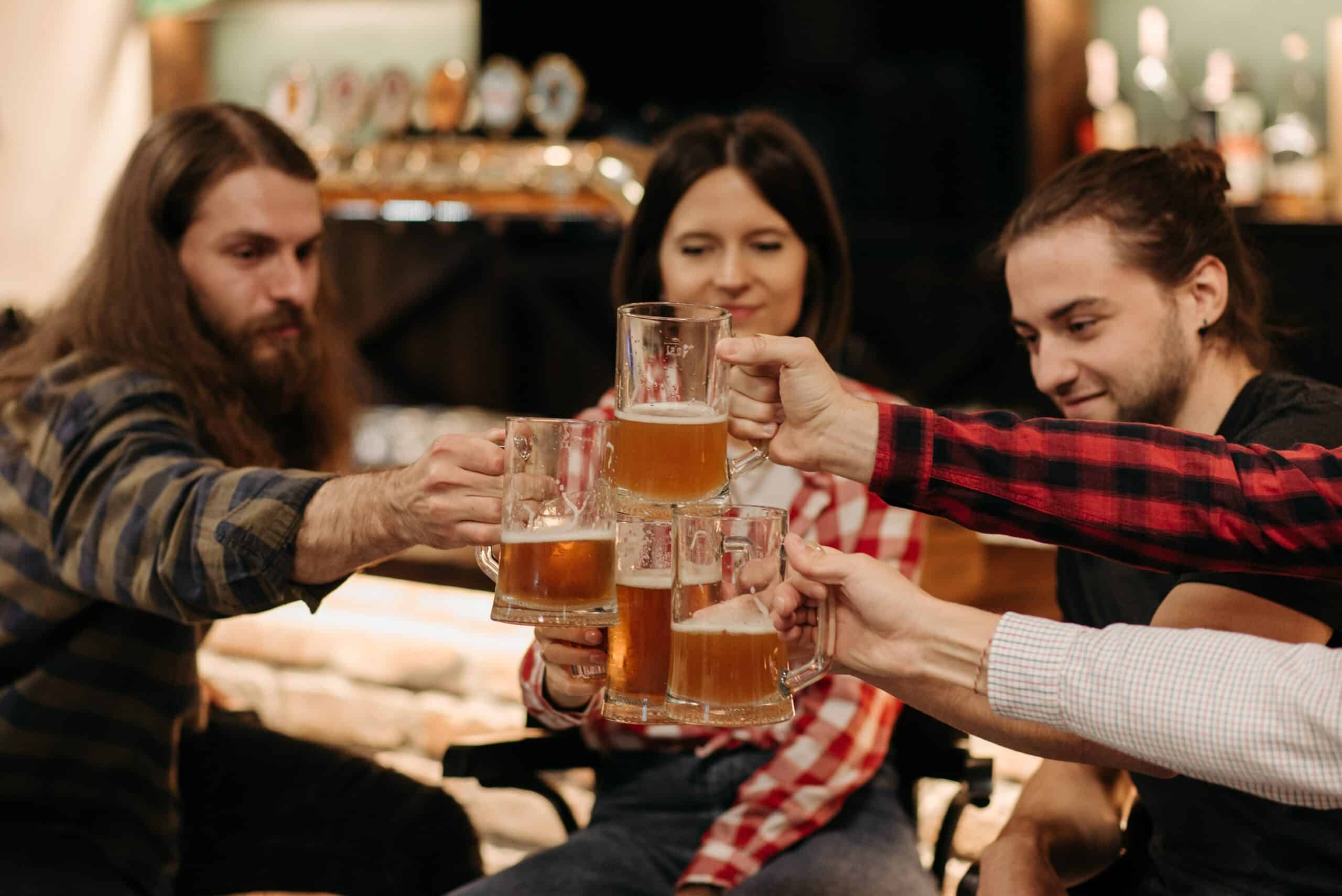
Dunkelweizen
A Dunkelweizen is a combination between a hefeweizen and a Dunkel (dark German lager). It has a fuller-bodied character, thanks to the Dunkel influences. But it’s still made with the Weizen ale yeast and malt as with a hefeweizen.
American Wheat
American wheat beers use malted wheat like a hefeweizen, though they do significantly less (only 30%). The wheat beer consumed in the US is also brewed with either neutral ale yeast or lager yeast. This results in a very mild flavor, perfect for drinking with a meal.
Sour
Sours are ales brewed with lactobacillus, a type of healthy bacteria that makes the beer tart. Many sours are also brewed with fruit that adds a kick of sweetness to the beer.
There are two popular types of sours: kettle sours and Berliner Weisse.
Kettle sours are brewed with berries and lactose, making them a creamy and fruity style of beer. Berliner Weisse is a beer that dates back to Northern Germany in the 17th century, made with malted barley, wheat, yeast, and lactic acid bacteria. Berliner Weisse is the most popular type of beer in Berlin. Since they’re extremely sour, they’re often mixed with fruit or with pale lagers to balance the sourness.
Here’s our complete take on the best sour beers you can find.
Gose
A gose is an ale brewed with salt. This gives the beer a unique, almost savory flavor. It’s often mixed with other fruit.
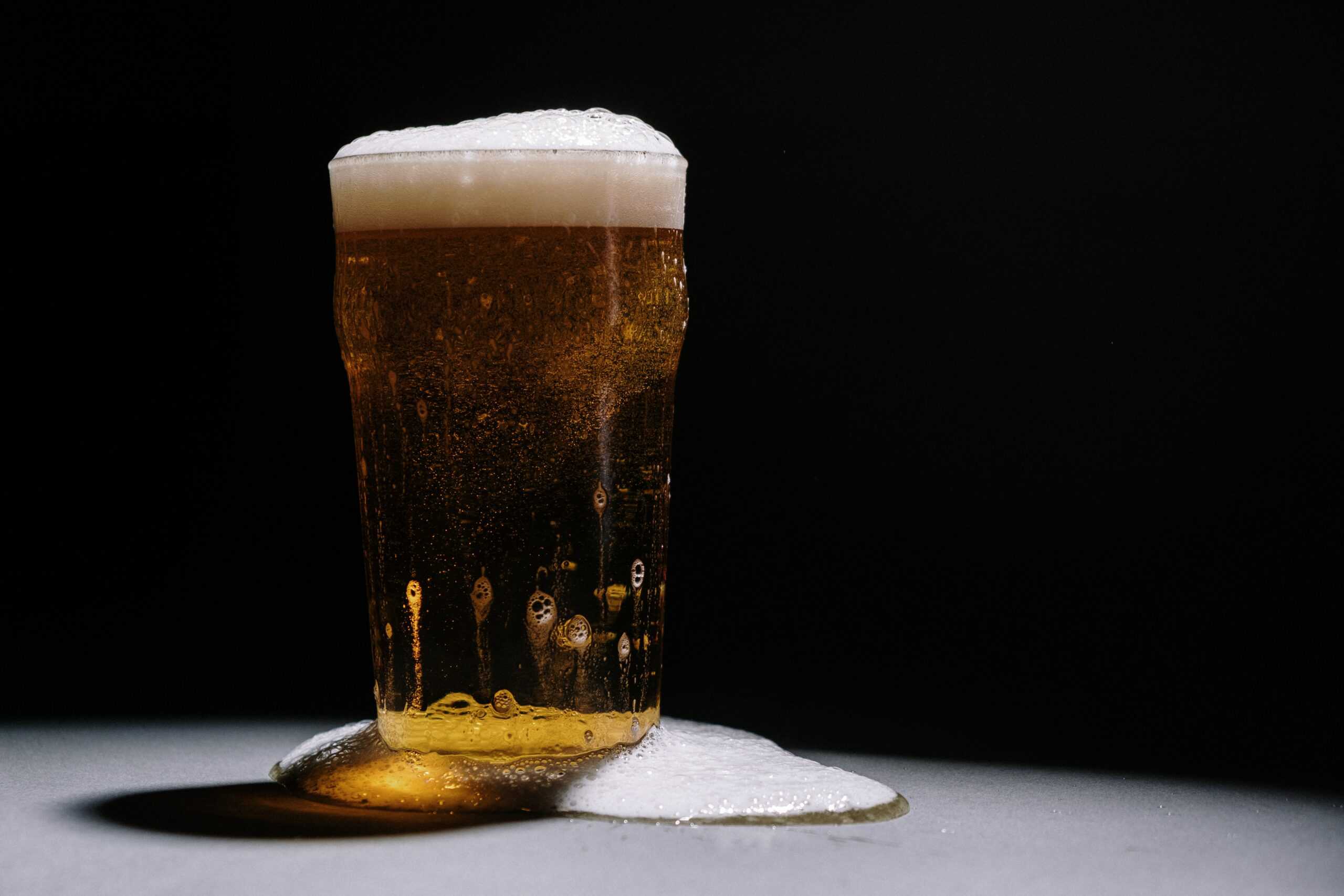
Beer May Not Always Follow These Guidelines
One of the biggest beer misunderstandings is that all brewers brew their beer the same way.
While this article serves as a guide to the various types of beer and what makes them different, understand that brewing is an art form and the world’s best brewers get creative. This means that you may see unconventional styles.
For example, some pale ales may be brewed with more hops but won’t be labeled as an IPA. Some ales may be brewed at larger temperatures. While stouts are typically more full-bodied than porters, some porters may be richer in flavor.
With that being said, some brewers do stick to the traditional style guidelines for the beer they’re brewing. Instead of being specific about the different styles of beer, it’s best to try different brews and find the ones you love the most.
FAQs
Question: How Many Types of Beer Are There?
Answer: Did you know we barely scratched the surface on the different types of beer available? There are over 100 distinct styles of beer! If we named them all, this list would last forever — especially since there are always new hybrids emerging. But we did name the most common beers you will see at a tasting room or tap house.
Question: What Are the Main Styles of Beer?
Answer: For the Quick Notes version of this article, we can easily separate beer into two categories: ales and lagers. From here, we can separate the most popular beer by category.
Ales:
• Pale ale
• Indian pale ale (IPA)
• Porter
• Stout
While lagers have different categories, the traditional lager is more popular compared to its varieties.
Question: What Type of Beer is Stella Artois?
Answer: Stella Artois is a beer first brewed in Leuven, Belgium. You may think it’s a Belgian wheat beer because of that. Actually, it’s a pilsner. Pilsners are also very popular in Belgium, and Stella Artois is the gold standard for Belgian-style pilsners.
Question: What Type of Beer in Heineken?
Answer: Heineken is a Dutch beer and is another popular export from Europe. Heineken is considered a pale lager that has an ABV of 5%.
Question: What Are the Most Popular Beer Brands?
Answer: With so many brands of beer in existence, which ones are the most popular? Here are the highest-rated beer brands in the world:
• Guinness
• Heineken
• Corona
• Samuel Adams
• Budweiser
• Blue Moon
• Coors
• Miller
Question: Which Beers Are Popular Among Women?
Answer: Are you a lady who wants to start trying beer but aren’t sure what to drink? Maybe you want to introduce craft beer to a female loved one but aren’t sure where they should start? These beer styles are the most popular among women:
• Lager
• Wheat
• Cider
Question: Which Beers Are the Smoothest?
Answer: Do you prefer a smooth beer with dinner or for simply sipping? Here are our recommendations for a smooth beer:
• Leinenkugel’s Summer Shandy
• Landshark IPA
• Shock Top
• Abita Strawberry Lager
• Blue Moon
• Samuel Adams Whitewater IPA
Pour Yourself a Cold One
Whew! After reading this comprehensive list of beer styles, it’s time to pour yourself a cold one, put your feet up, and call it a day. With so many different beer styles out there, you have limitless options.
Whether you choose to drink a big box brand or you want to try a microbrewed beer, you deserve a fresh beer.
As you can see, ales are the most diverse type of beer. But what makes an ale an ale? Read our ale guide or continue reading popular beer reviews:
- Pacifico Beer Review
- Lowenbrau Lager Review
- The Best White Stout Review
- Harp Lager Review
- Icehouse Review
- Blue Moon Mango Wheat Review
- Stella Artois Solstice Review
- Victoria Beer Review
- Voodoo Ranger Imperial IPA Review
- Voodoo Ranger Juicy Haze Review
- Ghost in the Machine Review
- Fiddlehead IPA Review and Guide
- Kentucky Brunch Stout Review
- Juice Bomb IPA Review
- Deschutes Fresh Haze Review
- Goose Island Christmas IPA Review
- Guinness Blonde Lager Review
- Jack’s Abby House Lager Review
- Sierra Nevada Oktoberfest Review
- Devils Backbone Vienna Lager Review
- Boulevard Tank 7 Review
- Mississippi Mud Beer Review
- Amber Bock Beer Review
- Blue Point Toasted Review
Or find some of the best beers if you are looking for:
